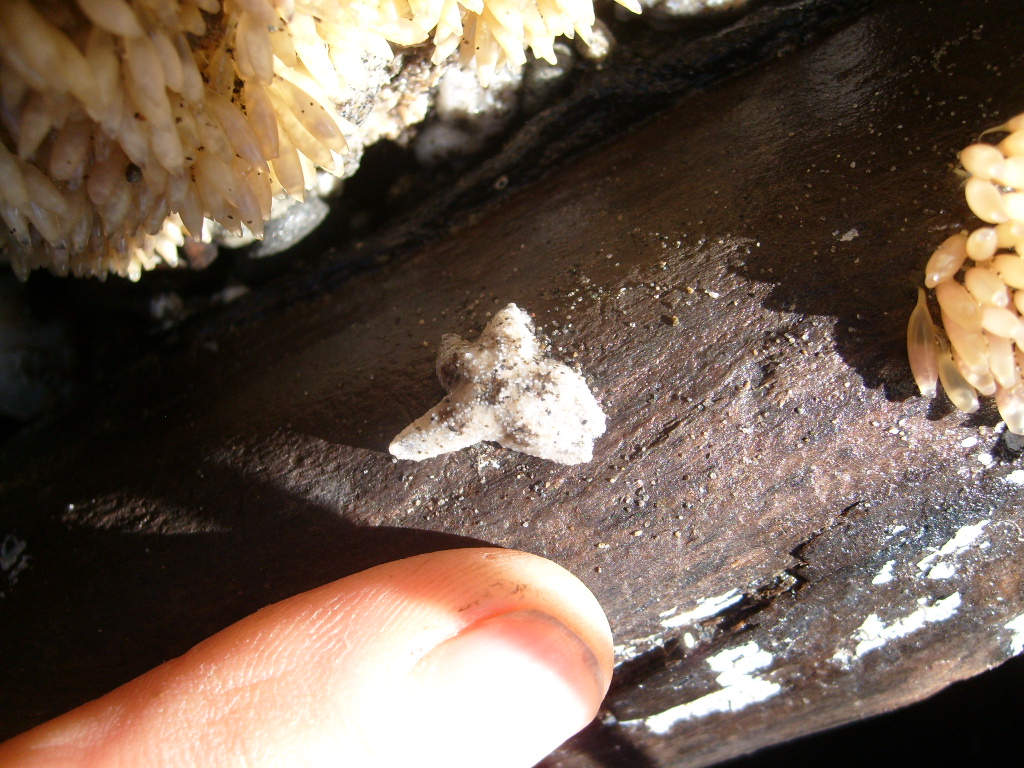![6armssign[1]](https://coasst.org/wp-content/uploads/2014/03/6armssign1.jpg)
Thanks, Burt (Kalaloch North and Kalaloch South) for sharing the photo of sea star “babies” at the Feiro Marine Life Center thanks also to Jody and Janis for their in-situ photos from Ruby Beach (part of Olympic National Park). With both of these hitting our inbox at the same time, we wondered, is this just coincidence? When do sea stars reproduce in our coastal waters?
Sea Stars are part of the Phylum Echinodermata (literally ”spiny-skinned” in Greek). Male and female sea stars (like Common Murres, only THEY can tell the difference) release sperm and eggs directly into the water column (April-July). The resulting embryos become free-swimming larvae, and after several months metamorphose and settle on substrate as tiny versions of the sea stars we recognize. The sea stars in Burt and Jody and Janis’ photos are settled plankton from last summer.
And why do we care? Why are sea stars so important? Well, we need not look far! Just knock on Dr. Bob Paine’s door, University of Washington Biology Professor Emeritus. It’s through years of research on Tatoosh Island that Dr. Paine developed the keystone species hypothesis, a landmark hypothesis in ecology and conservation that describes the importance of (and resulting impact from) predator removal to all other species in an ecological community. So while small, we’re well-served to pay attention to these stars, now and in the future.
Learn more about Dr. Paine’s research, including what he sees as the most pressing questions to be answered by future generations in his interview with Hillary, when she was a UW graduate student.

